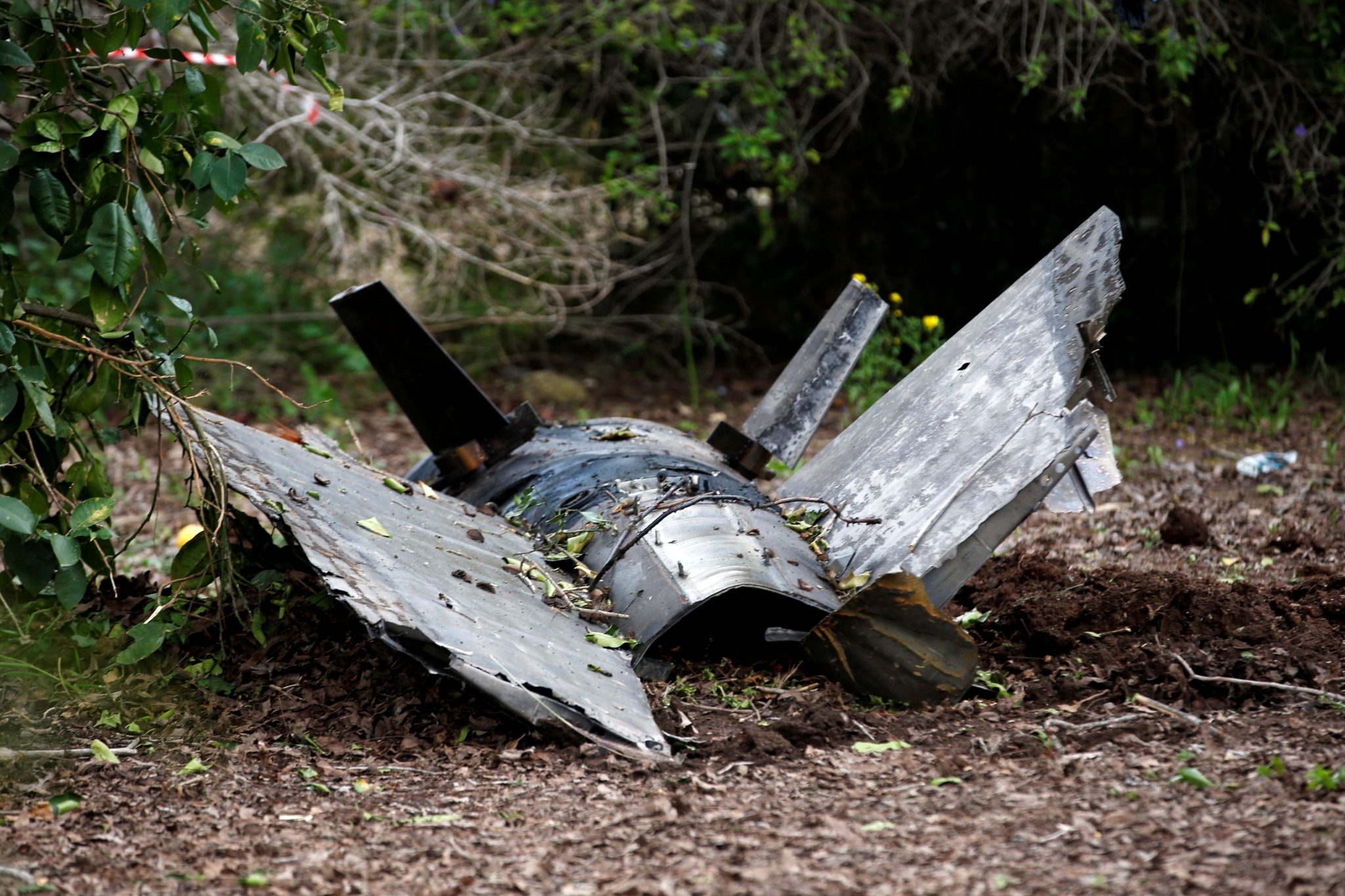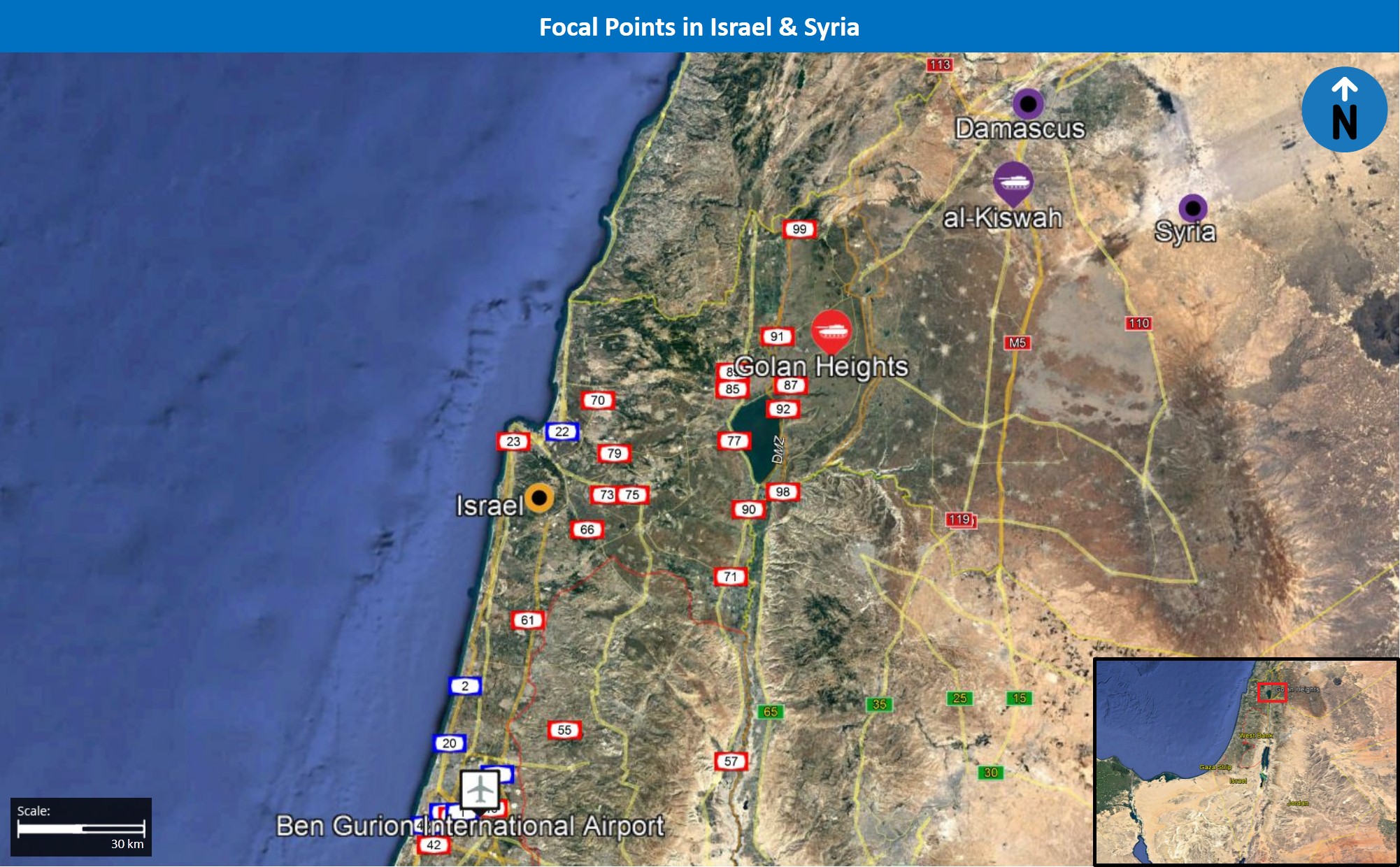Current Situation
According to the Israel Defense Forces (IDF), IAF aircraft targeted the Syrian Air Defense System, as well as Iranian military bases in Syria during the morning hours of February 10. Twelve targets, including three Syrian aerial defense batteries and four Iranian military targets, were attacked. The airstrikes reportedly targeted Iranian military bases in al-Kiswah, located south of Damasus.
The attack was launched in retaliation to the penetration of an Iranian unmanned aerial vehicle (UAV) from Syria into Israeli airspace over the Golan Heights, as well as Syria’s shooting down of an Israeli F-16 with anti-aircraft fire earlier in the day. The latter led to at least one missile landing in Israel, sounding multiple code red sirens in the Golan Heights.
Departures from Ben Gurion International Airport were temporarily halted and arrivals were delayed during the morning hours of February 10 due to increased IDF operations in Israeli airspace. However, further reports indicate that operations at the airport have resumed.
According to incoming reports, the IAF conducted further airstrikes against unspecified targets near al-Kiswah during the late morning hours of February 10.
Assessments & Forecast
The development is highly notable given that it marks the first Iranian launched UAV into Israeli airspace. The incident represents a significant escalation in hostilities between Israel on one side and Syria and Iran on the other. Although reports do not indicate whether the UAV was armed or not, the drone was likely being utilized for reconnaissance and attempting to gain intelligence on IDF troop positions in the Israeli Golan Heights. Such information would allow Iran’s proxy Lebanese Shiite Hezbollah to target IDF positions in Israeli Golan Heights in a future conflict.
The IDF achieves two objectives by targeting Iranian installations in Syria. First, the Israeli government displays a lack of tolerance against any breach to its sovereignty, regardless of its severity. Second, the IDF utilizes such events to neutralize Iranian military facilities in Syria. The IDF has taken increasing efforts against Iran’s actions in Syria in light of the risk that it may pose to Israeli defense. Syria, however, also increased its efforts to retaliate against Israel, as witnessed in today’s incident. Syria’s response is even further significant in regards to this latest development given that it succeeded in shooting down an Israeli aircraft, a feat that the Syrian army has not achieved in recent years. Major successes for the Syrian army in its conflict with both rebels and the Islamic State (IS) likely emboldened it and increased its confidence in terms of conflict with Israel. Israel now faces an increasing threat when conducting such actions given the Syrian army’s higher morale and Iran’s evolving presence in Syria.
Iran’s determination to build its own presence through proxies in Syria, mainly Hezbollah, and in sensitive locales along Israel’s northern borders highlights the risk that the IDF faces in the region. The Israeli government has made attempts both diplomatically and militarily to prevent a buildup of Iranian-backed forces at the border with the Golan Heights, yet this recent development shows Iran’s resilience in proceeding and Syria’s willingness to back Tehran, despite the consequences the Syrian government may face in its own civil war. The Iranian UAV may lead Israel to consider more serious measures in dealing with this threat presented by Hezbollah and other proxies. Israel has already conducted large-scale drills in recent months to simulate a Hezbollah infiltration into northern Israel.
FORECAST: Israel will likely utilize the coming hours to target additional installations in Syria, as recent reports suggest, while Syrian forces may continue to respond forcibly. Syria’s response may include further missiles landing in Israel’s Golan Heights, leading to further code red sirens in the near-term. IED detonations, as well as RPG attacks targeting IDF soldiers positioned along the border also remain possible, though to a lesser extent.
No side at this time is likely seeking a major large-scale escalation in conflict, especially Syria given its preoccupation in its own war. The US and Russia are also likely determined to achieve de-escalation between all sides given that such conflict may counteract their own interests in the region. Regardless, the Israeli-Syrian border region is likely to remain tense in the coming days and weeks as the IDF remains persevering in eliminating the threat presented by Iranian-backed proxies and as Syria likely responds to any infiltrations of its own sovereignty. Additionally, increased IDF operations in Israeli airspace may lead to further disruptions to commercial air traffic in the coming hours.
Recommendations
Israel
Travel to Israel may continue at this time while adhering to security precautions regarding militant attacks, while avoiding the immediate vicinity of the Syrian, Lebanese, and Egyptian borders, due to the persistent risk for cross-border violence.
Those residing or operating in Israel are advised to monitor the situation in the vicinity of the border areas regarding incidents of cross-border hostilities and possible rocket attacks. Remain cognizant of the situation along the Lebanese and Syrian border areas, and continue adhering to all safety precautions regarding early warning sirens for incoming rockets. In case you hear a siren, seek shelter in a protected area and remain inside for at least 10 minutes.
Syria
We advise against all travel to Damascus and Aleppo, given the general threat of indiscriminate aerial bombardment and artillery shelling from government forces as well as attacks by various militant groups. Attacks by rebel forces may include the use of rocket-propelled grenades, suicide bombings, and mortar attacks.
Those remaining in Damascus should ensure that contingency and emergency evacuation plans are updated due to the potential for a further deterioration in the security situation. Additionally, those remaining in Damascus are advised to avoid all travel to outlying areas of the city given the persistent threat of militancy.


